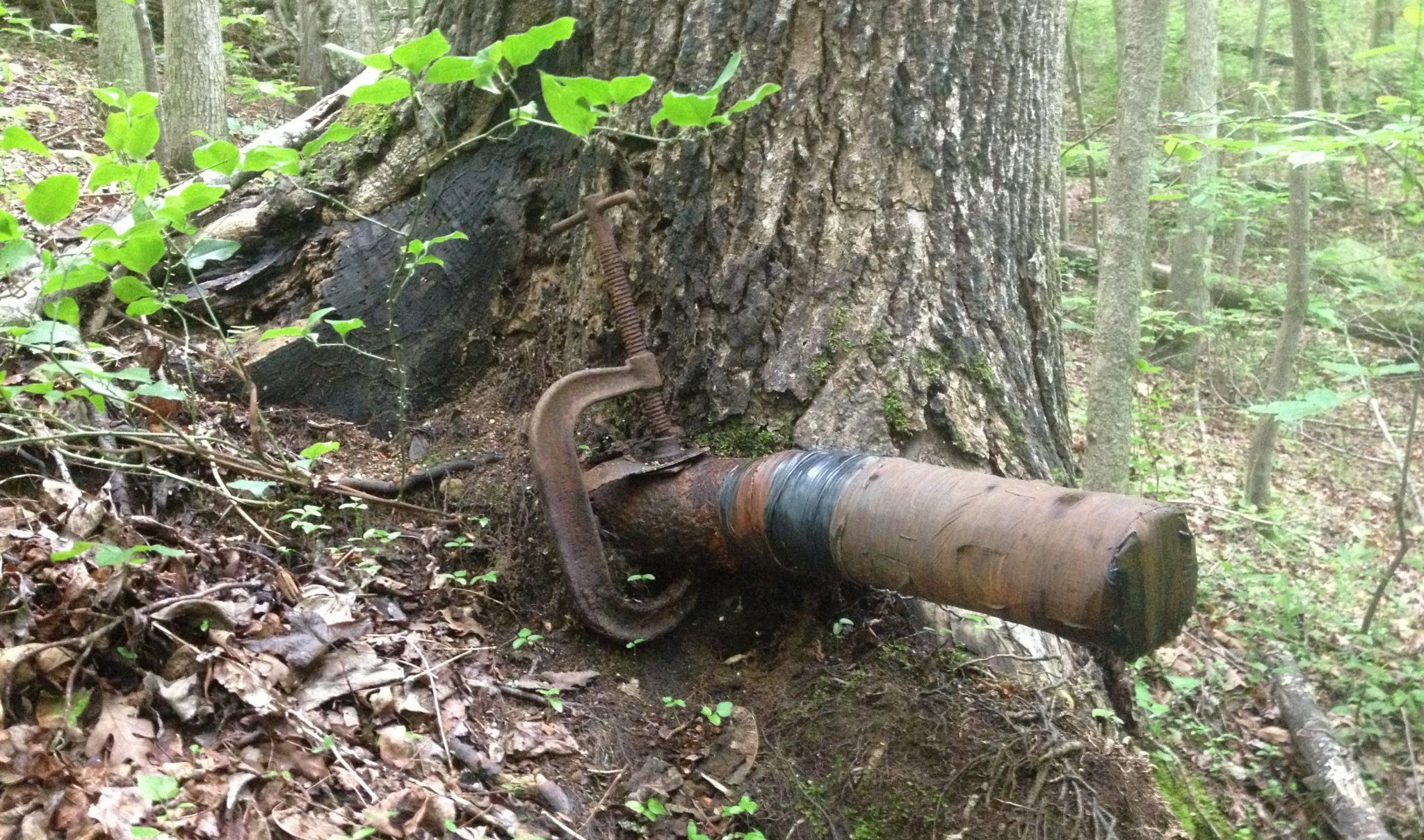Fish & Water

Winter offers a great time to inspect and maintain your pond dam and water control structures. Temperatures are excellent, the leaves are off the trees, and most snakes have gone into hibernation. A breached pond dam can be costly to repair and create a staggering amount of force and damage downstream. Annual inspection and care of your pond dam and water control structures gives you peace of mind, knowing that your upstream and downstream investments are secure and that you have ensured the safety of those downstream. The following are several steps that you can take to reduce the risk of the dam and drain failure.
Mowing
One of the most critical steps in dam maintenance is mowing throughout the season. Trees and shrubs are some leading causes of dam leaks and failures. Large woody plants that are allowed to grow anywhere on the dam may cause leaks as their root systems penetrate the dam’s clay core. Additionally, for blow-over trees and dead plants, their roots decompose, voids are left in the dam, and leaks can develop. If you already have established trees or shrubs on your barrier (anything with a trunk greater than 6 inches in diameter at breast height), your best option is to keep them as healthy as possible. Removing large trees or shrubs from a dam is more likely to cause leaks as their roots decay than if they are left healthy and standing. Anything smaller than 6 inches in diameter should be cut and treated with herbicide via a cut stump application to keep it from resprouting.
Clearing Debris
The simplest form of maintenance is checking and clearing your water control structures of debris. These include the trash rack that should be over every standpipe, the standpipe itself, and both the principal and emergency spillways. Often, leaf litter and limbs will accumulate on these structures (or sometimes intentionally stopped up by beaver), and this debris slows water movement during high rain or flow-through events, increasing the risk of flooding. If a pond level exceeds the dam’s height and begins to wash over, it may only take a few minutes for the dam to erode and wash away along with the rest of your pond. Be sure to install, repair, or replace trash racks over your pond’s standpipe as necessary, as they can rust off, or the grates can break and bend.
Monitoring Wildlife Damage
When examining a dam, watching for any damage caused by wildlife is essential. If beavers or muskrats use your pond, they should be removed immediately. Besides the obvious problems of cutting desirable trees and vegetation along the pond, they often attempt to make their homes inside the pond dam. Beavers or muskrats burrowing into your pond dam can cause substantial leaks and failure. These and other animals can try to clog or nest in the standpipe on the dam’s downstream side, so please check that both ends are cleaned out. Also, cattle should not be allowed any access to a pond dam. Cattle that walk on pond dams can create issues with erosion as vegetation is destroyed. It is suggested that cattle be fenced out of the pond or allowed limited access to a pond used for watering. Your county USDA office may have programs to support proper cattle watering and pond exclusion.
Maintaining the Control Valve
For ponds constructed with a valve serving for water level control, now is an excellent time to exercise/operate the control structure. This is done to keep your control valve in good working order. Valves left unused for years at a time will often become inoperable. Because of this, caution and best judgment should be used in deciding whether it is safe to open any pond valve. Older ponds–or those valves that have not been operated regularly–can often fail to open or seize and close, leaving a pond to drain helplessly. Use your discretion.
Conclusion
Annually checking off these pond maintenance chores will help prolong your pond’s life and allow for peace of mind knowing that your pond’s dam and water control structures are as sound as they can be. Information like this and much more is available at www.aces.edu or by contacting your county’s Alabama Cooperative Extension System office.

